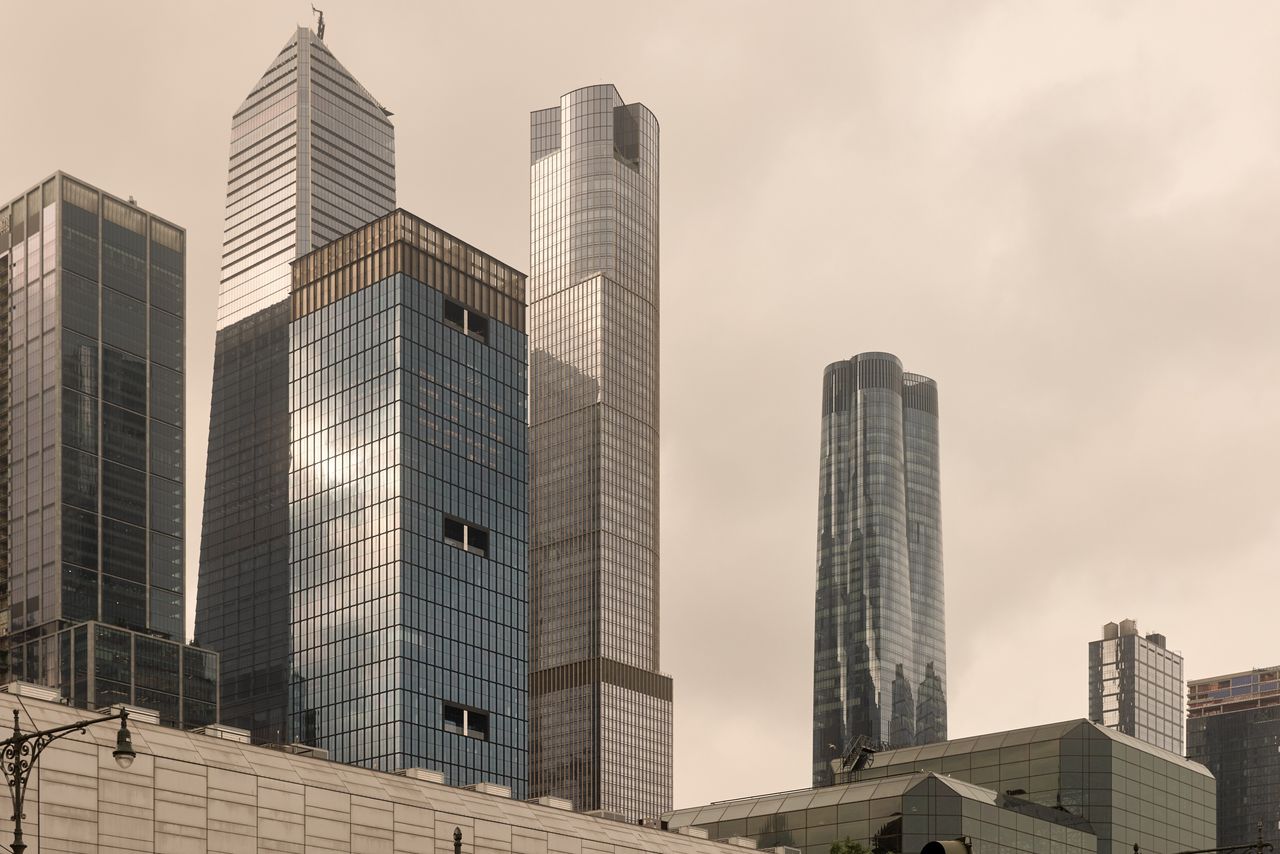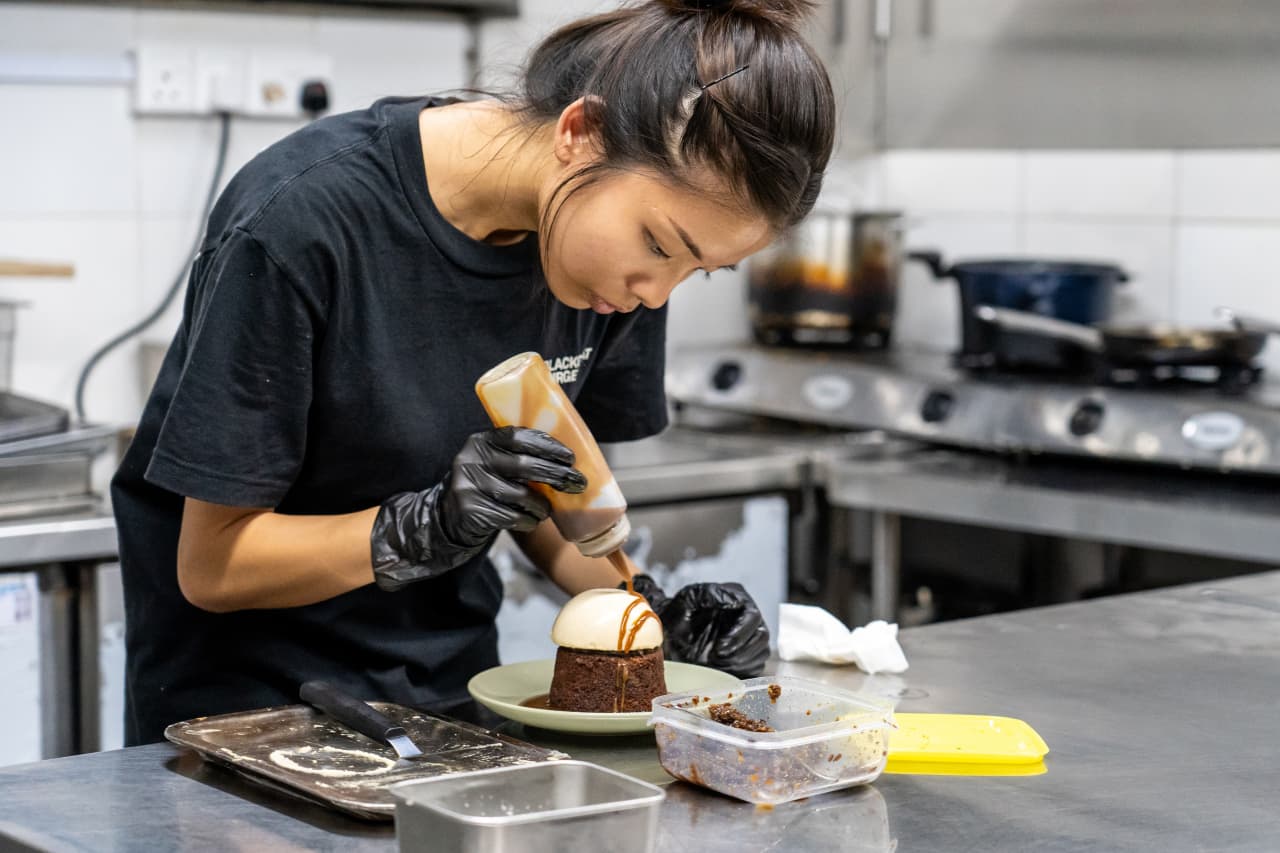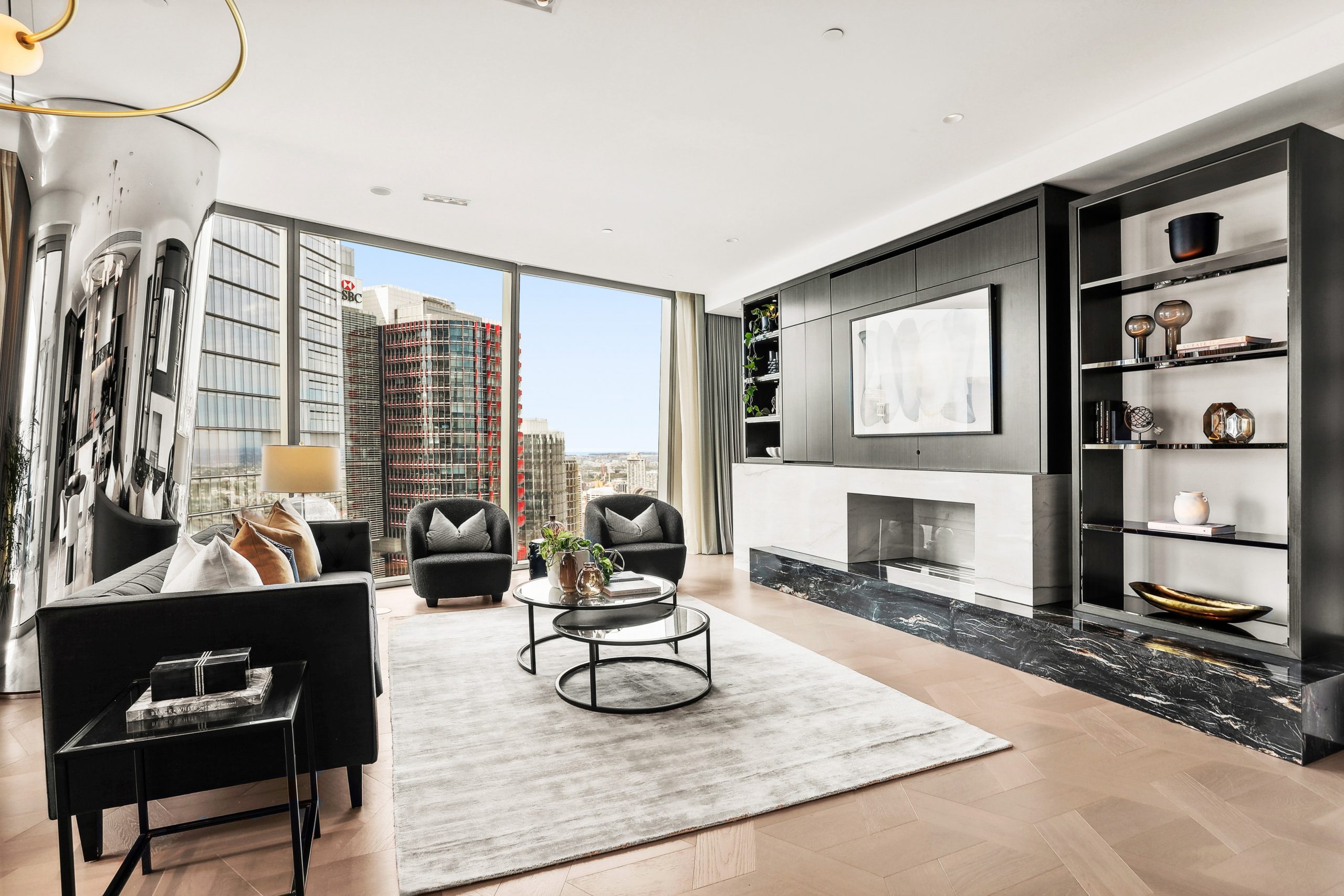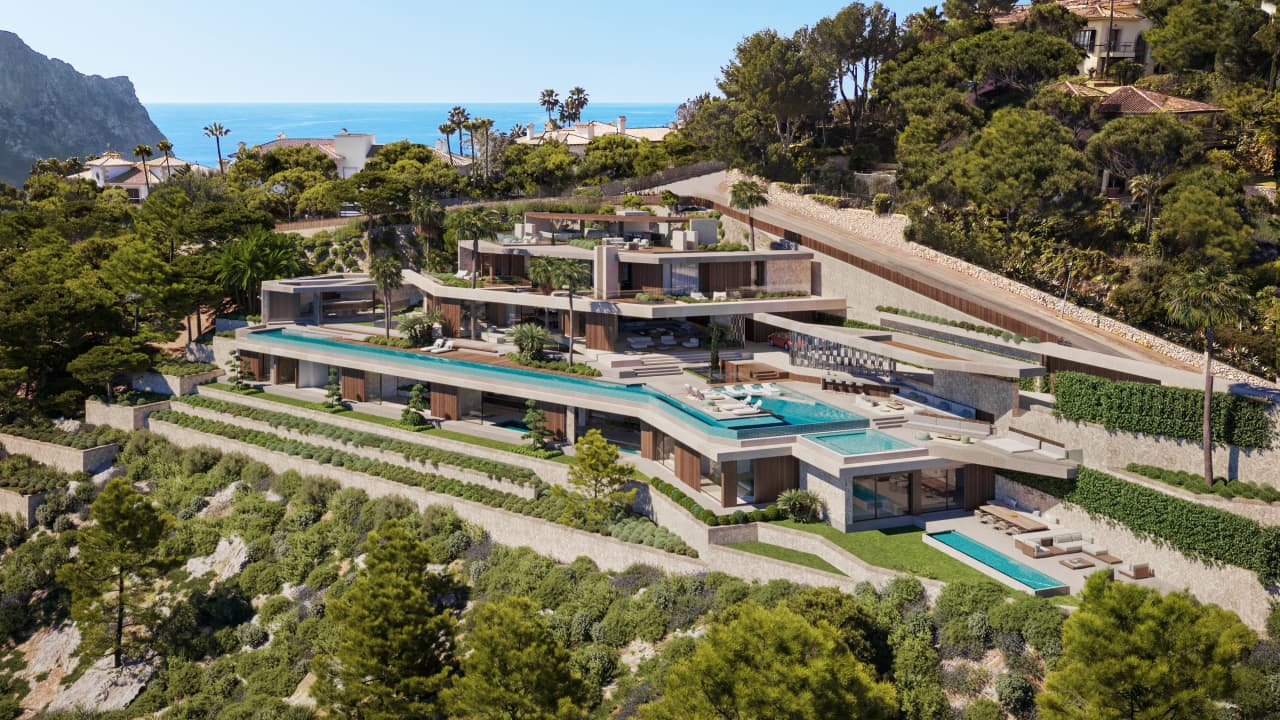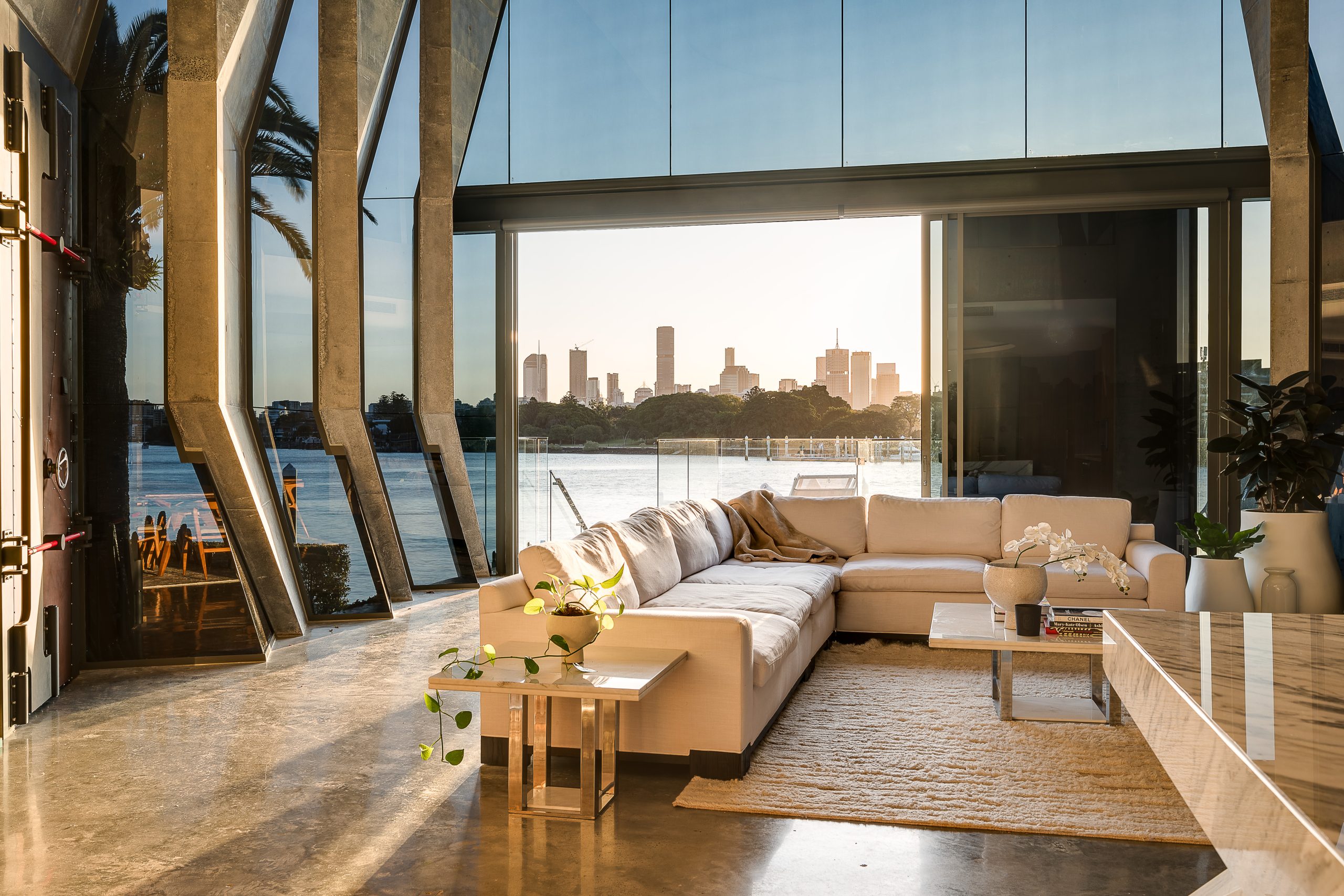The Luxury Tower Built for New York’s Elite Still Sits Half Empty
Related Companies has struggled to unload its most expensive units at 35 Hudson Yards. Now the developer is offering deep discounts.
When the Related Companies set out to build Hudson Yards, a roughly 28-acre mega-project on Manhattan’s far west side, its goal was lofty: The developer wanted to turn a windswept railyard into the next hot destination for the global elite. That meant building and marketing a brand new neighbourhood with office towers, luxury stores, restaurants and high-end amenities.
The project’s condominium towers—15 and 35 Hudson Yards—were designed to lure moneyed buyers further west than ever before, and set a new benchmark for pricing outside of traditional high-end enclaves, with executives at Related promoting the neighbourhood as “the new Park Avenue.”
Now, roughly a decade after Related broke ground on Hudson Yards, it has struggled to make that vision a reality. At the luxury glass-and-limestone tower 35 Hudson Yards, approximately 50% of the units were still unsold as of the last week of June, more than four years after sales launched, according to an analysis by The Wall Street Journal based on sales recorded with the city’s Department of Finance. Related is slashing prices and offering incentives at the condominium, such as covering buyers’ taxes and closing costs, local agents said.
Recorded sales at 35 Hudson as of late June had closed for an average of 30% less than the original prices filed with the New York state Attorney General’s office, and active listings were discounted by up to 50%, the analysis shows. At least four large units at the building have sold for more than 40% off, records show. A four-bedroom apartment recently traded for $8.5 million, about 46% less than its projected asking price of $15.725 million, records show.
Related’s Sherry Tobak, who heads sales for the two condominiums alongside new development marketing firm Corcoran Sunshine, said the developer had been forced to reassess its expectations at 35 Hudson Yards.
“When we first opened the job, we thought we’d be able to get a higher price,” she said. “The message [from the market] was that we were overreaching a little bit.”
While many developers across the city are cutting prices amid higher interest rates, the discounts being offered at 35 Hudson Yards are bigger than developer concessions in other areas of Manhattan, according to appraiser Jonathan Miller of Miller Samuel.
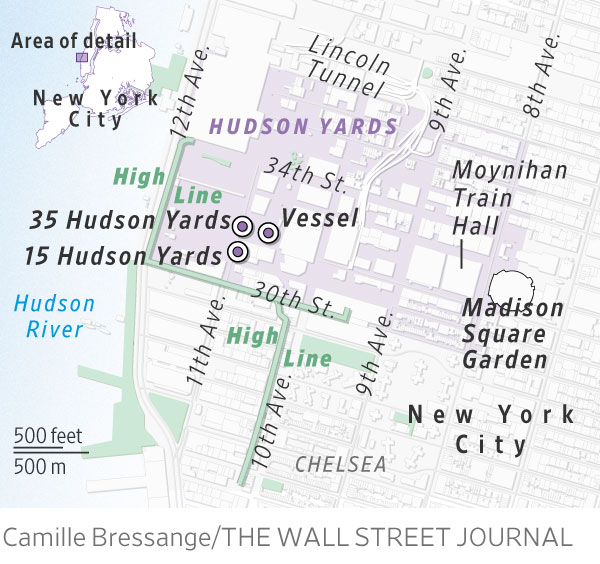
“The actual housing market is not seeing anywhere near that kind of discount,” Miller said. Related disputed that characterisation, saying the building is performing in line with “its competitive set.”
Priced slightly lower than 35 Hudson, 15 Hudson Yards originally fared better, and is about 90% sold after almost seven years of marketing. Still, some 15 Hudson homeowners are listing their units for less than they paid as they look to resell in a shifting market.
In all, Related still has more than a billion dollars worth of condos left to sell at Hudson Yards, based on the initial pricing, the Journal analysis shows.
The Hudson Yards condos were always going to be a tough sell for Related, which secured the rights to develop the massive railyard site through a roughly $1 billion lease deal with the Metropolitan Transportation Authority in 2010. The far-west location—between 10th Avenue and the West Side Highway—was untested for luxury housing, and required creating an entirely new neighbourhood out of whole cloth. Retail at Hudson Yards now includes high-end stores such as Cartier, Coach and Dior and restaurants including chef José Andrés’ Mercado Little Spain. The project’s more than 10 million square feet of office space is home to tenants such as L’Oréal and Facebook parent company Meta.
To help sell the new neighbourhood it created, Related promised safety—the developer works with a private security firm to police Hudson Yards.
The reception to the new Hudson Yards neighbourhood has been mixed. While some flock there for the shopping, restaurants and tourist destinations like the Edge observatory, others have described the glass skyscrapers as soulless, with little authentic personality.
“It’s a very dramatic area that’s sprung out of nothing,” said Manhattan real-estate agent Donna Olshan. “It’s high-rise buildings, commercial real estate and a mall. It has less of a residential feeling.”
A number of suicides at the Vessel, a tourist attraction that sits at the centre of Hudson Yards, have generated negative press coverage and resulted in the closure of the walkable sculpture. A spokeswoman for Related said the company is evaluating solutions that would allow it to reopen the Vessel.
The first Hudson Yards condo tower, 15 Hudson Yards, was designed to have a downtown feel, said Tobak. Designed by Diller Scofidio + Renfro and Rockwell Group, the 88-story, 285-unit building resembles four interconnecting arcs of glass. The property has about 40,000 square feet of amenities, including a fitness centre, a pool and an open-air terrace wrapped in a 60-foot glass screen wall. Sales launched at the project in September 2016. Initial pricing filed with the attorney general’s office started at $1.92 million for a one-bedroom unit and rose to $32 million for a four-bedroom penthouse.
By contrast, 35 Hudson Yards was designed for a more uptown audience, and is “a little more classic,” Tobak said. Indeed, Related’s own founder and chairman, Stephen Ross, relocated there from another of the company’s projects, the former Time Warner Center at Columbus Circle. Designed by Skidmore Owings & Merrill, 35 Hudson Yards is 92 stories with 143 units. The building has interiors by Tony Ingrao, who also designed Ross’s Time Warner Center penthouse, and comes with amenities such as a private gym and access to the offerings of the Equinox Hotel, which is also in the building. Initial pricing filed with the attorney general started at $5 million for a two-bedroom unit and rose to $59 million apiece for a pair of penthouses.
When 15 Hudson Yards launched sales, it benefited from an upswing in the New York condo market. By the end of the first year of sales, Related had signed contracts for more than $500 million worth of apartments, nearly a third of its projected sellout for the whole tower, property records show. Foreign buyers, particularly from Asia, were a strong component of the buyer pool, thanks to marketing and trade shows Related did there, Tobak said. A large number of those buyers have since rented their units out, according to StreetEasy.
Today, about 30 units remain unsold, recorded sales show, with the building’s higher-priced apartments making up the majority of the leftover inventory. Tobak noted that that number is closer to 25 if signed contracts are factored in.
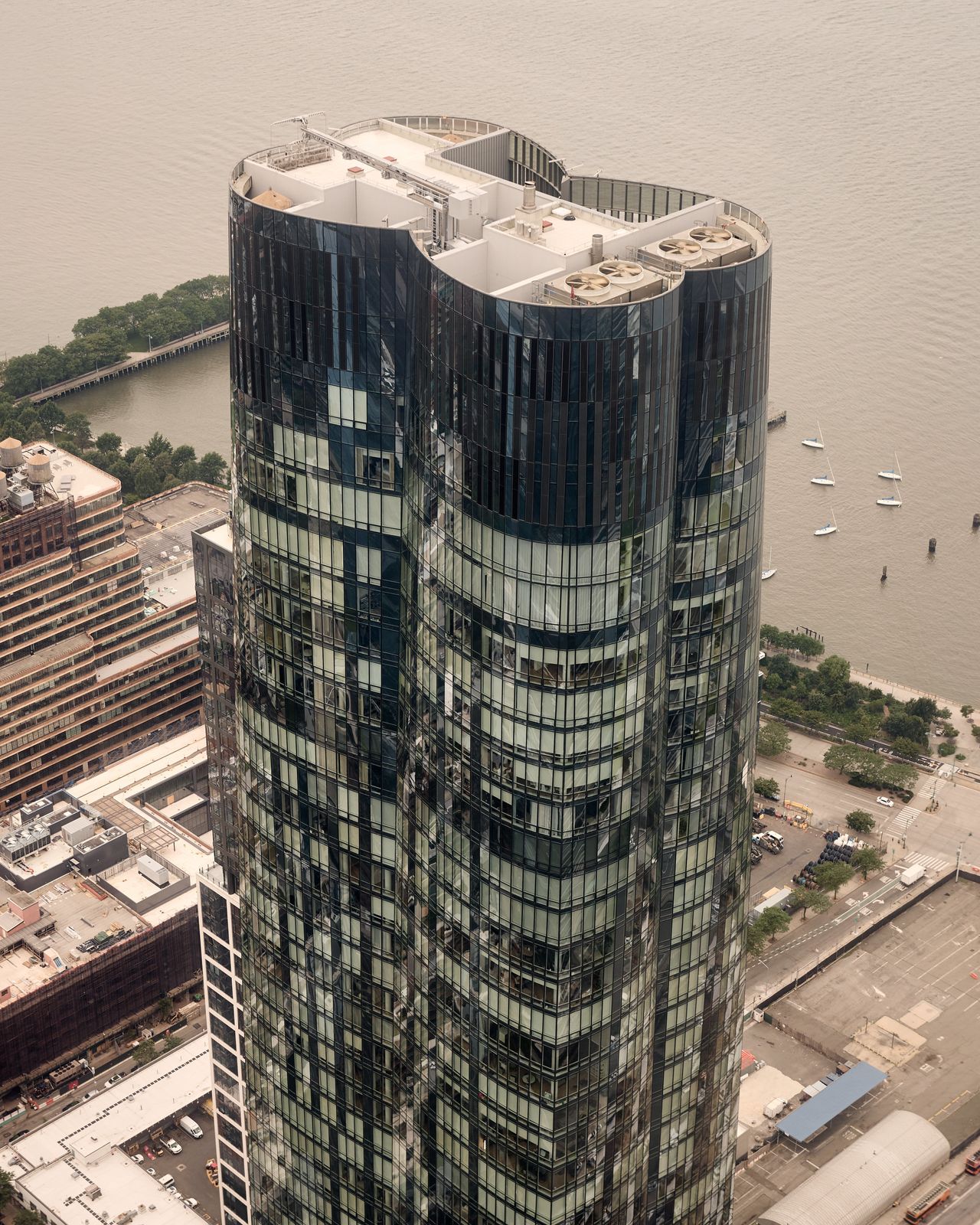
Some buyers who purchased early on are now struggling to unload their units in the current market. Ann Cutbill Lenane, a Douglas Elliman real-estate agent who has sold multiple units at Hudson Yards, signed a contract in 2017 to buy a $4.84 million condo for herself at 15 Hudson Yards. Now, with her children out of the house and a need to downsize, she has accepted that she’s unlikely to find a buyer willing to match that price on a resale. She has the unit listed for $4.495 million and said she expects to sell for a loss, especially since Related is currently listing units at a discount, undercutting the price she paid.
She said she feels embarrassed to be a real-estate agent losing money on a piece of property. Still, “I can’t beat myself up,” she said. “You always take a risk when you step into a new product. That’s just the nature of the beast.”
Tobak said that buyers who purchased at the height of the market at 15 Hudson Yards are now facing inevitable market realities, but recommended that they try to wait out the current cycle. “If you hold on for a little while, you’re going to make money,” she said.
When 35 Hudson Yards launched sales in March 2019, it debuted at a higher price point than 15 Hudson in a much less favourable market. “By the time 35 came up, the bloom was off the rose,” said Olshan.
Related signed contracts on about 15 of the 143 units at 35 Hudson in the first year, records show. Then, its efforts were further hampered by the pandemic, which temporarily shut down sales offices across the city. To generate activity, Related temporarily rented units at the building with an option to buy, Tobak said.
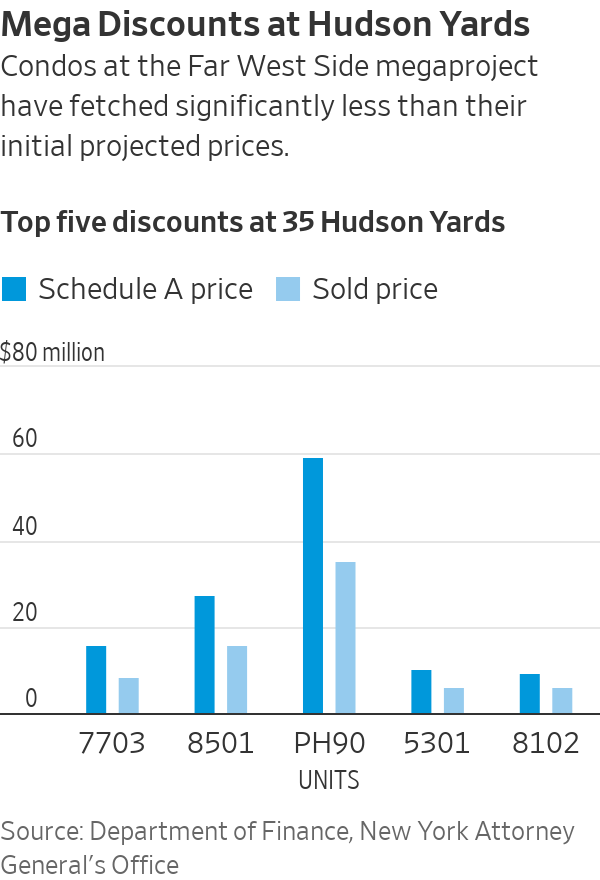
Still, Related has struggled to build the momentum needed to meet sales targets at 35 Hudson. Agents said one factor is Related’s proposal to bring a casino to Hudson Yards, which potential buyers worry could draw large crowds and make the area feel tacky. “I’m sure whatever gets built is going to be very tasteful,” said Dan Gotlieb of Digs Realty Group, who has done business at 35 Hudson. “But it’s just an uncertainty right now that’s probably also contributing to the sluggish sales.”
In response to criticism of the casino plan, Related said in a statement: “If we are fortunate enough to be one of the successful bidders for a gaming license, we will deliver a world-class resort with amenities, restaurants, retail and entertainment that will even further elevate the offerings at Hudson Yards and make the experience for the neighbourhood, residents and office tenants even greater than it is today.”
Of the 35 Hudson units currently listed on StreetEasy, many are asking significantly less than the initial pricing. A five-bedroom, roughly 4,600-square-foot unit is asking $13.85 million, 49% less than its original $27 million offering-plan price, records show. A four-bedroom, roughly 3,800-square-foot unit is asking $9.995 million, 43% less than its original projected price.
Olshan likened 35 Hudson to “a big Broadway show that just never took off.”
Real-estate agents with recent deals at 35 Hudson said they have been pleasantly surprised by Related’s level of negotiability. Alex Carini of the Carini Group said his firm recently helped a Brazilian family purchase a $9.95 million condo at the tower, a 37.5% discount from the offering-plan pricing. Related also covered the client’s closing costs, he said. In this market, he said, sellers often give a discount or cover closing costs, but rarely both.
Gotlieb said his clients, onetime renters at 15 Hudson, sat on the sidelines for years as they waited for prices to fall at 35 Hudson. “They wanted a certain kind of product and they weren’t willing to pay $10 million for it,” he said. Ultimately, they secured a four-bedroom, roughly 3,400-square-foot unit for $8.5 million, nearly 46% off the offering plan price, records show.
Retired corporate attorney Grace Kim, 50, said she felt she had “room to negotiate” when she purchased a three-bedroom apartment for her family at 35 Hudson last year.
“Mortgage rates were so high,” Kim said. “Everyone was kind of afraid to jump into the buyer’s market.”
Kim declined to comment on what she paid, but a Related spokesperson said that her unit type typically ranges in price from $6 million to $7.5 million. It is not clear what the apartment was originally priced at.
Kim said she feels comfortable with the investment, given that she plans on living there long term. “I feel like the market is going to come back eventually,” she said.
In the luxury segment of the Manhattan market—the top 10% of deals—the number of closed sales fell 39.6% in the second quarter from the same period of last year, according to a recent report prepared by Miller for Douglas Elliman. The median sales price held relatively steady, ticking up by 3.9% to $6.7 million, during that same period.
Tobak remains optimistic. She said she sees foot traffic picking up at 35 Hudson and has sent contracts out on multiple units in the past few weeks. Factoring in contracts signed, the building is closer to 60% sold, she said. Still, the developer has “less wiggle room than before” in terms of profitability.
“We’re at a decent point,” she said. “Are we making a ton of money? I don’t know.”
 Copyright 2020, Dow Jones & Company, Inc. All Rights Reserved Worldwide. LEARN MORE
Copyright 2020, Dow Jones & Company, Inc. All Rights Reserved Worldwide. LEARN MORE
This stylish family home combines a classic palette and finishes with a flexible floorplan
Just 55 minutes from Sydney, make this your creative getaway located in the majestic Hawkesbury region.
No trip to Singapore is complete without a meal (or 12) at its hawker centres, where stalls sell multicultural dishes from generations-old recipes. But rising costs and demographic change are threatening the beloved tradition.
In Singapore, it’s not unusual for total strangers to ask, “Have you eaten yet?” A greeting akin to “Good morning,” it invariably leads to follow-up questions. What did you eat? Where did you eat it? Was it good? Greeters reserve the right to judge your responses and offer advice, solicited or otherwise, on where you should eat next.
Locals will often joke that gastronomic opinions can make (and break) relationships and that eating is a national pastime. And why wouldn’t it be? In a nexus of colliding cultures—a place where Malays, Indians, Chinese and Europeans have brushed shoulders and shared meals for centuries—the mix of flavours coming out of kitchens in this country is enough to make you believe in world peace.
While Michelin stars spangle Singapore’s restaurant scene , to truly understand the city’s relationship with food, you have to venture to the hawker centres. A core aspect of daily life, hawker centres sprang up in numbers during the 1970s, built by authorities looking to sanitise and formalise the city’s street-food scene. Today, 121 government-run hawker centres feature food stalls that specialise in dishes from the country’s various ethnic groups. In one of the world’s most expensive cities, hawker dishes are shockingly cheap: A full meal can cost as little as $3.
Over the course of many visits to Singapore, I’ve fallen in love with these places—and with the scavenger hunts to find meals I’ll never forget: delicate bowls of laksa noodle soup, where brisk lashes of heat interrupt addictive swirls of umami; impossibly flaky roti prata dipped in curry; the beautiful simplicity of an immaculately roasted duck leg. In a futuristic and at times sterile city, hawker centres throw back to the past and offer a rare glimpse of something human in scale. To an outsider like me, sitting at a table amid the din of the lunch-hour rush can feel like glimpsing the city’s soul through all the concrete and glitz.
So I’ve been alarmed in recent years to hear about the supposed demise of hawker centres. Would-be hawkers have to bid for stalls from the government, and rents are climbing . An upwardly mobile generation doesn’t want to take over from their parents. On a recent trip to Singapore, I enlisted my brother, who lives there, and as we ate our way across the city, we searched for signs of life—and hopefully a peek into what the future holds.
At Amoy Street Food Centre, near the central business district, 32-year-old Kai Jin Thng has done the math. To turn a profit at his stall, Jin’s Noodle , he says, he has to churn out at least 150 $4 bowls of kolo mee , a Malaysian dish featuring savoury pork over a bed of springy noodles, in 120 minutes of lunch service. With his sister as sous-chef, he slings the bowls with frenetic focus.
Thng dropped out of school as a teenager to work in his father’s stall selling wonton mee , a staple noodle dish, and is quick to say no when I ask if he wants his daughter to take over the stall one day.
“The tradition is fading and I believe that in the next 10 or 15 years, it’s only going to get worse,” Thng said. “The new generation prefers to put on their tie and their white collar—nobody really wants to get their hands dirty.”
In 2020, the National Environment Agency , which oversees hawker centres, put the median age of hawkers at 60. When I did encounter younger people like Thng in the trade, I found they persevered out of stubbornness, a desire to innovate on a deep-seated tradition—or some combination of both.
Later that afternoon, looking for a momentary reprieve from Singapore’s crushing humidity, we ducked into Market Street Hawker Centre and bought juice made from fresh calamansi, a small citrus fruit.
Jamilah Beevi, 29, was working the shop with her father, who, at 64, has been a hawker since he was 12. “I originally stepped in out of filial duty,” she said. “But I find it to be really fulfilling work…I see it as a generational shop, so I don’t want to let that die.” When I asked her father when he’d retire, he confidently said he’d hang up his apron next year. “He’s been saying that for many years,” Beevi said, laughing.
More than one Singaporean told me that to truly appreciate what’s at stake in the hawker tradition’s threatened collapse, I’d need to leave the neighbourhoods where most tourists spend their time, and venture to the Heartland, the residential communities outside the central business district. There, hawker centres, often combined with markets, are strategically located near dense housing developments, where they cater to the 77% of Singaporeans who live in government-subsidised apartments.
We ate laksa from a stall at Ghim Moh Market and Food Centre, where families enjoyed their Sunday. At Redhill Food Centre, a similar chorus of chattering voices and clattering cutlery filled the space, as diners lined up for prawn noodles and chicken rice. Near our table, a couple hungrily unwrapped a package of durian, a coveted fruit banned from public transportation and some hotels for its strong aroma. It all seemed like business as usual.
Then we went to Blackgoat . Tucked in a corner of the Jalan Batu housing development, Blackgoat doesn’t look like an average hawker operation. An unusually large staff of six swirled around a stall where Fikri Amin Bin Rohaimi, 24, presided over a fiery grill and a seriously ambitious menu. A veteran of the three-Michelin-star Zén , Rohaimi started selling burgers from his apartment kitchen in 2019, before opening a hawker stall last year. We ordered everything on the menu and enjoyed a feast that would astound had it come out of a fully equipped restaurant kitchen; that it was all made in a 130-square-foot space seemed miraculous.
Mussels swam in a mushroom broth, spiked with Thai basil and chives. Huge, tender tiger prawns were grilled to perfection and smothered in toasted garlic and olive oil. Lamb was coated in a whisper of Sichuan peppercorns; Wagyu beef, in a homemade makrut-lime sauce. Then Ethel Yam, Blackgoat’s pastry chef prepared a date pudding with a mushroom semifreddo and a panna cotta drizzled in chamomile syrup. A group of elderly residents from the nearby towers watched, while sipping tiny glasses of Tiger beer.
Since opening his stall, Rohaimi told me, he’s seen his food referred to as “restaurant-level hawker food,” a categorisation he rejects, feeling it discounts what’s possible at a hawker centre. “If you eat hawker food, you know that it can often be much better than anything at a restaurant.”
He wants to open a restaurant eventually—or, leveraging his in-progress biomedical engineering degree, a food lab. But he sees the modern hawker centre not just as a steppingstone, but a place to experiment. “Because you only have to manage so many things, unlike at a restaurant, a hawker stall right now gives us a kind of limitlessness to try new things,” he said.
Using high-grade Australian beef and employing a whole staff, Rohaimi must charge more than typical hawker stalls, though his food, around $12 per 100 grams of steak, still costs far less than high-end restaurant fare. He’s found that people will pay for quality, he says, even if he first has to convince them to try the food.
At Yishun Park Hawker Centre (now temporarily closed for renovations), Nurl Asyraffie, 33, has encountered a similar dynamic since he started Kerabu by Arang , a stall specialising in “modern Malay food.” The day we came, he was selling ayam percik , a grilled chicken leg smothered in a bewitching turmeric-based marinade. As we ate, a hawker from another stall came over to inquire how much we’d paid. When we said around $10 a plate, she looked skeptical: “At least it’s a lot of food.”
Asyraffie, who opened the stall after a spell in private dining and at big-name restaurants in the region, says he’s used to dubious reactions. “I think the way you get people’s trust is you need to deliver,” he said. “Singapore is a melting pot; we’re used to trying new things, and we will pay for food we think is worth it.” He says a lot of the same older “uncles” who gawked at his prices, are now regulars. “New hawkers like me can fill a gap in the market, slightly higher than your chicken rice, but lower than a restaurant.”
But economics is only half the battle for a new generation of hawkers, says Seng Wun Song, a 64-year-old, semiretired economist who delves into the inner workings of Singapore’s food-and-beverage industry as a hobby. He thinks locals and tourists who come to hawker centers to look for “authentic” Singaporean food need to rethink what that amorphous catchall word really means. What people consider “heritage food,” he explains, is a mix of Malay, Chinese, Indian and European dishes that emerged from the country’s founding. “But Singapore is a trading hub where people come and go, and heritage moves and changes. Hawker food isn’t dying; it’s evolving so that it doesn’t die.”
This stylish family home combines a classic palette and finishes with a flexible floorplan
Just 55 minutes from Sydney, make this your creative getaway located in the majestic Hawkesbury region.









